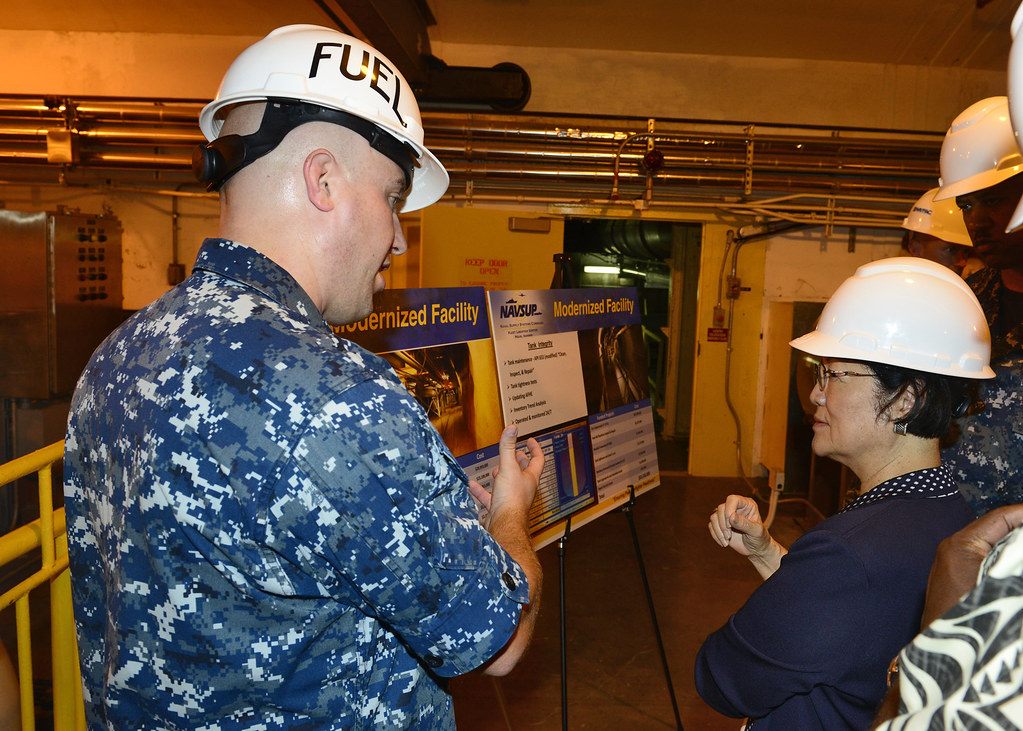Blowing the traditional news out of the water – in this case, the COVID numbers, the variants and the various petty arguments that go on with our government officials, the Red Hill fuel leak and resulting water contamination at the Navy well has become the news to pay attention to the last couple of weeks.
In watching the developments, this writer has been looking for an angle that does not play into the general narrative of “the water source is polluted, we have to fix it”. Or “warnings about this has been going on for years about fuel storage underneath an aquafer.”
Both stories belay the fact that this event, feared by many, is one of those unfolding tragedies that will not just go away once the aquafer is repaired if it even can.
In thinking about how one should look at this situation, and how serious it could become over time, it may be best to look at, unfortunately, another uncontrollable disaster that destroyed a wide swath of land back in 1986.
Yes, we are talking about the explosion and meltdown of the Soviet nuclear reactor and the environmental and personal disaster that continues to unfold across the area north of Kyiv (Kiev) in Ukraine.
You may now think here “Stan, that is an exaggeration at best, hyperbole at worst”, and you may be right as the history of this event goes along. But for this time, let us look at two items of comparison that may make one think twice.
First, let us take a look at the facility itself. According to the website connected to the Commander, Navy Region Hawai‘i, the Red Hill fuel tanks are constructed with concrete and grout with a steel liner. The whole facility, all 20 tanks, was built in and around 1941 – 80 years ago this year.

PC: “150630-N-DT805-041” by U.S. Pacific Fleet is licensed under CC BY-NC 2.0
The navy decided to build the tanks in an area where the deepest of tanks in the hill is only 100 feet above the aquifer that feeds the navy residences in Red Hill. That well is part of a larger aquafer in the Hālawa area that feeds water to most of the eastern south shore of O‘ahu.
One thing that one should be concerned about is the amount of failsafe measures to assure that petroleum products that leak out of the tanks don’t affect the water source. This could have been done by double lining the tanks, or retrofitting the tanks with another layer. Nothing like that had happened, although it was talked about since the first incident in 2014.
This thinking was also done in the after-effects of the Chernobyl explosion in 1986.
If one watches the HBO series Chernobyl, there was a statement said during the hearings in which there was a very easy answer as to why there was no containment system put in place,
Judge Milan Kadnikov: Why?
Valery Legasov: Why? For the same reason, our reactors do not have containment buildings around them, like those in the West. For the same reason, we don’t use properly enriched fuel in our cores. For the same reason, we are the only nation that builds water-cooled, graphite-moderated reactors with a positive void coefficient. [pause] It’s cheaper.
So, the question that one should ask about the Red Hill facility is whether those who were in charge of the facility decided to press their luck and not implement containment construction to protect the aquifer. Did they decide not to ask Congress for appropriations because they wanted to solve the problem on the cheap? Did the navy decide not to ask because of the cost, knowing full well that an ecological disaster could happen if things go wrong (as it did)?
A second comparison between this event and Chernobyl has to do with how this will affect people who consumed laced water and is getting sick from it. Now the comparison is a little less equal because nuclear poisoning is a world worse than injecting aviation fuel.
However, the effects regardless of severity, are troubling at best, horrific at worse. Currently, the navy doctors who were at the December 2 press conference in which they said that everyone will recover from the effects of this poisoning. But according to the National Institutes of Health, in a paper they wrote about the effects of ingesting jet fuel, there are long term effects,
Chronic exposure to jet fuel has been shown to have adverse effects on human liver function, to cause emotional dysfunction, to cause abnormal electroencephalograms, to cause shortened attention spans, and to decrease sensorimotor speed…Thus, short-term exposure of mice to JP-8 jet fuel caused significant toxicological effects on the immune system, which were long-lasting and persistent. It appears that the immune system may be the most sensitive indicator of toxicological damage due to JP-8 exposure. Such long-term changes in immune status may have significant effects on the health of the exposed individual.
(JP-8 is a type of fuel that is used on jet planes, it is petroleum-based).
While in the mini-series Chernobyl they did show the effects of the nuclear poisoning of people it also said at the end, as a postscript,
Despite widespread accounts of sickness and death as a result of radiation, the Soviet government kept no official records of their fate… We will never know the actual human cost of Chernobyl. Most estimates range from 4,000 to 93,000 deaths. The official Soviet death toll, unchanged since 1987…is 31.
How many will eventually get sick from all this and how many will face long-term health problems from what is happening at Red Hill? Those questions, as well as others, need to be asked today, and tomorrow and all the other tomorrows until there is a full accounting. Because in the end, yes, this could have been Hawai‘i`s Chernobyl.
And the scary thought is, it could still be.
Postscript: As this article was being drawn up, the Navy announced it was temporarily suspending operations at the Red Hill fuel tanks.
